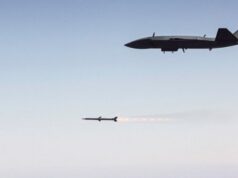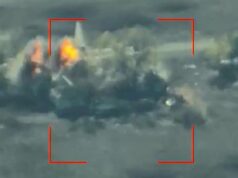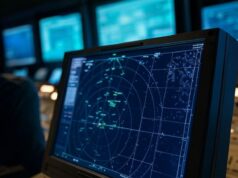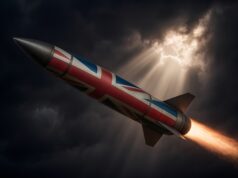The US Navy have declared initial operational capability of the MQ-8C Fire Scout unmanned helicopter, clearing the way for fleet operations and training.
The MQ-8 Fire Scout is a sea-based, vertical lift unmanned system that is designed to provide reconnaissance, situational awareness, and precision targeting support for ground, air and sea forces.
“This milestone is a culmination of several years of hard work and dedication from our joint government and industry team,” said Capt. Eric Soderberg, Fire Scout program manager.
“We are excited to get this enhanced capability out to the fleet.”
The US Navy say that the MQ-8C variant is an endurance and payload upgrade to its predecessor, the MQ-8B, offering up to twelve hours on station depending on payload, and incorporates the commercial Bell 407 airframe.
“The Northrop Grumman-built Fire Scout complements the manned MH-60 helicopter by extending the range and endurance of ship-based operations. It provides unique situational awareness and precision target support for the US Navy.
The MQ-8C has flown over 1,500 hours with more than 700 sorties to date. Over the next few years, Northrop Grumman will continue MQ-8C production deliveries to the Navy to complete a total of 38 aircraft.”
The MQ-8C will be equipped with an upgraded radar that allows for a larger field of view and a range of digital modes including weather detection, air-to-air targeting and a ground moving target indicator (GMTI).
It will deploy with a LCS (Littoral Combat Ship) in 2021 while the MQ-8B conducts operations aboard LCS in 5th and 7th Fleets.













I wonder if you could you put a Crowsnest on one of these and have 12-hour radar coverage for the QE?
I’m sure we could crowbar one on. It would be cool if it could still carry passengers.
Stand to be corrected but doubt it would generate enough energy. Would be a fantastic addition to provide coverage alongside merlins and wildcats. Could imagine they would pay for themselves in reduced flying hours and extending life of other airframes as well as providing some basic surveillance redundancy.
Pete
I like the idea.
I believe that the operator stations for Crowsnest are in the Merlin’s cabin (one of the reasons why it needs an aircraft the size of Merlin), so there’d have to be some kind of data link transmission to a station back on HMSQE instead- but no reason why it shouldn’t be looked at.
Sounds like an ideal solution in theory.
Or have operators inside ?
This could be very promising for our carriers in future.
Every one of our RN ships should have one of these.
I disagree that our ships should one of these when they could have 2 schneibel S100 or similar and a wildcat or merlin.
Agree they should all have an unmanned UAV, just think it should be a different product.
As for our carriers the standout product needed for them is a v22 fleet that can operate in so many roles it’s really a no brainier. We should just bite the bullet and lease 16 off the USMC until the next Gen ones come along and then go for those in a big way.
That is actually what I meant, not specifically this product